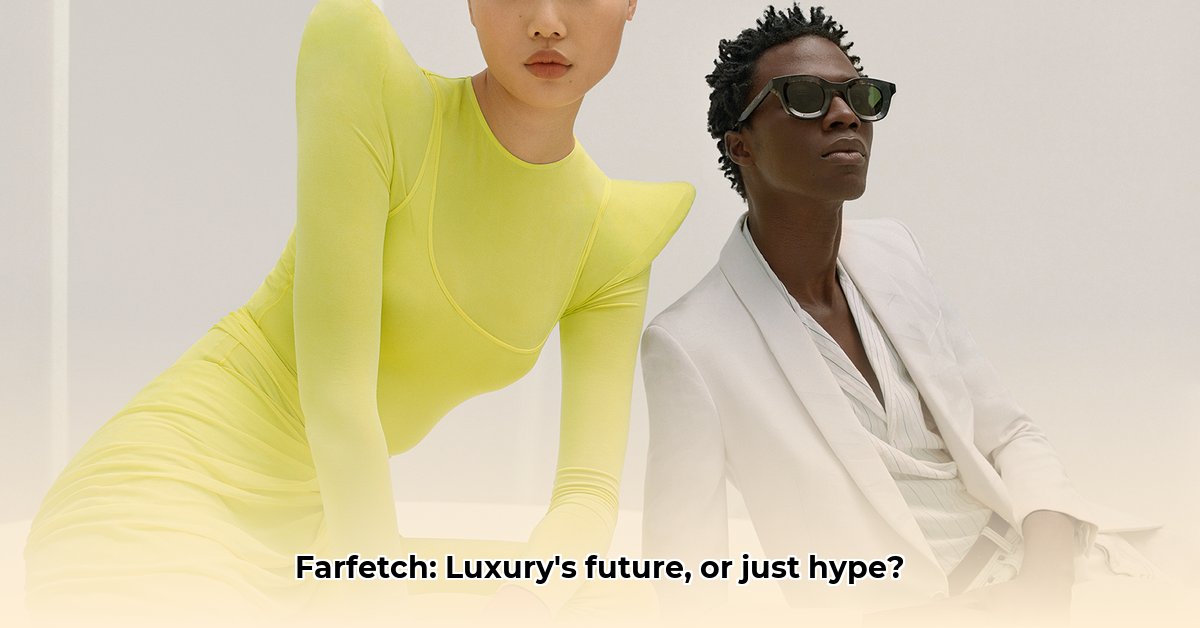
Navigating the High-Stakes Game of Luxury Online Retail
The online luxury market is booming, but it's a fiercely competitive landscape. Farfetch, a prominent player, is expertly navigating this complex terrain, leveraging innovative strategies while facing significant challenges. This article explores Farfetch's position, its competitive strategies, and the hurdles it must overcome to maintain its leading position in the ever-evolving world of high-end e-commerce. Is Farfetch truly poised for continued dominance, or are there unforeseen challenges looming? Let's investigate.
The Competitive Landscape: A High-Fashion Free-for-All
The luxury e-commerce sector isn’t a stroll in the park; it’s a high-stakes game. Farfetch faces competition from both direct and indirect rivals. Established luxury brands are increasingly establishing their own direct-to-consumer (DTC) online stores, cutting out the middleman and directly engaging with their clientele. This poses a clear challenge to marketplaces like Farfetch. Simultaneously, a new generation of digitally native luxury brands are emerging, leveraging social media and innovative marketing tactics to challenge established players. How will Farfetch retain its competitive edge against such diverse and rapidly evolving competition? This requires a constant evolution and adaptability, more than just a good marketing strategy.
Farfetch's Strategic Moves: A Multi-Pronged Approach
Farfetch isn't merely reacting; it's proactively shaping the future of luxury e-commerce. Hyper-personalization, using data analytics to tailor the customer experience, is a cornerstone of its strategy. Imagine receiving recommendations so precise they feel almost psychic – that's the level of personalization Farfetch is striving for. Sustainability is another key pillar, reflecting growing consumer demand for ethical and environmentally conscious brands. Farfetch is actively promoting sustainable practices and partnering with brands committed to this ethos. Data analysis shows consumer favorability towards such efforts, influencing Farfetch's commitment. Strategic partnerships with luxury brands are another strength, providing access to coveted products and bolstering its position within the industry. This collaborative approach creates a mutually beneficial relationship. Finally, Farfetch is embracing technological innovation, exploring Augmented Reality (AR) and Virtual Reality (VR) to offer more immersive shopping experiences. This cutting-edge technology enhances the customer journey, differentiating Farfetch from its competitors. The use of AR/VR technology shows an innovative approach in providing the best customer experience.
Challenges and Opportunities: The Road Ahead
Despite its considerable strengths, Farfetch confronts significant challenges. Counterfeit goods pose a constant threat, demanding robust authentication measures to maintain customer trust and brand integrity. Maintaining exclusivity while expanding its reach is a delicate balancing act. But the future also holds exciting opportunities. Emerging technologies, such as AI-powered personalization and sophisticated virtual try-on tools, offer the potential to redefine the luxury e-commerce experience. Expansion into new and emerging markets presents a significant growth catalyst too. The ability to adapt and innovate will be critical in navigating and capitalizing on these opportunities.
Conclusion: A Future Woven with Luxury and Technology
The future of luxury e-commerce hinges on adaptability and innovation. Farfetch, with its strategic mix of technological prowess, personalized experiences, and focus on sustainability, is well-positioned for continued growth. However, the competitive landscape remains dynamic, and the challenges presented by counterfeiting and brand competition will require ongoing vigilance and innovative solutions. The coming years will be a critical test of Farfetch's ability to maintain its leading position, highlighting the exciting, yet challenging, future of the luxury e-commerce market. The race to dominate this market is far from over.